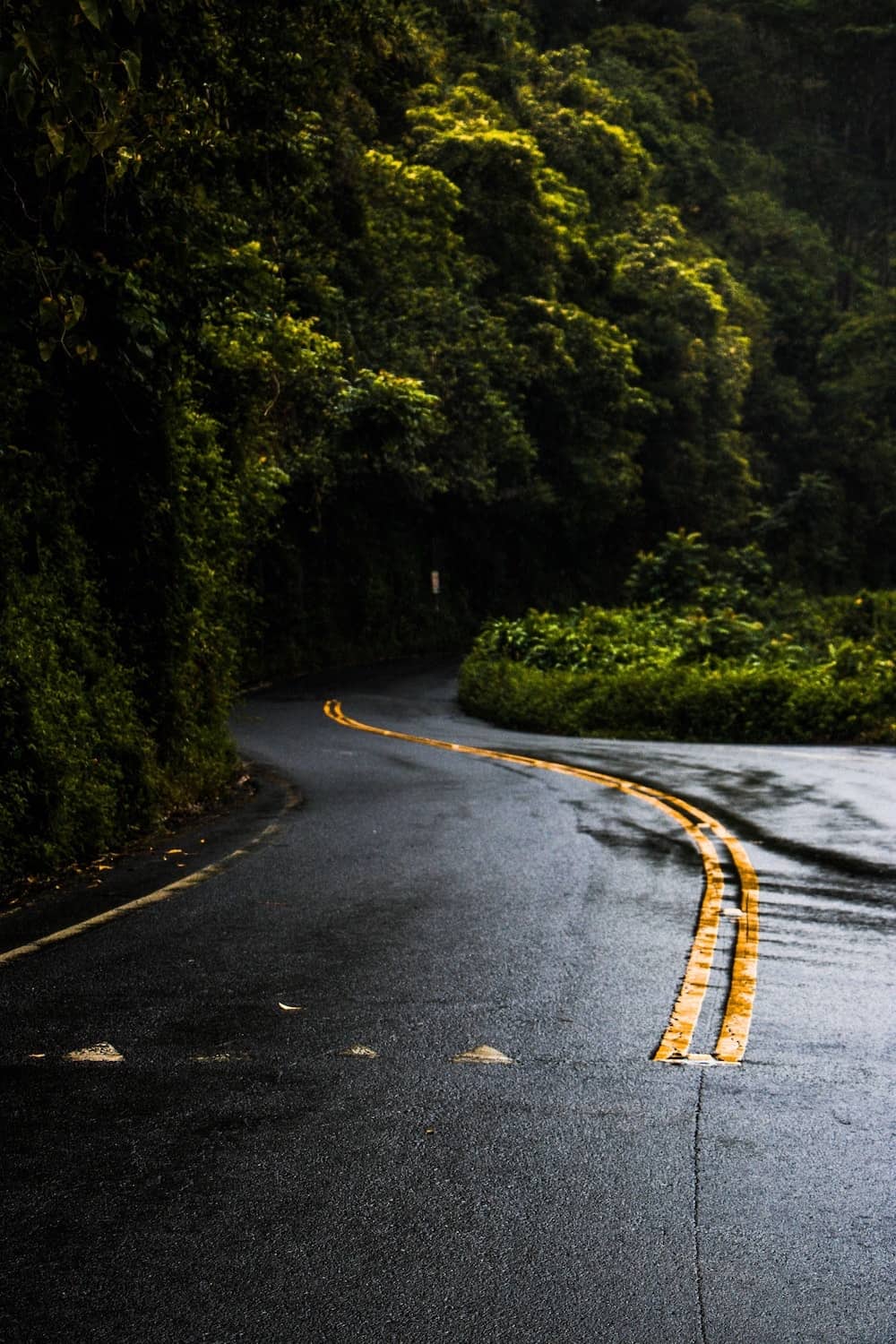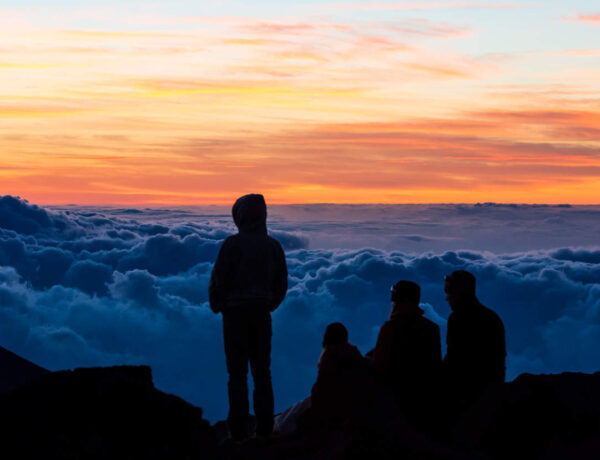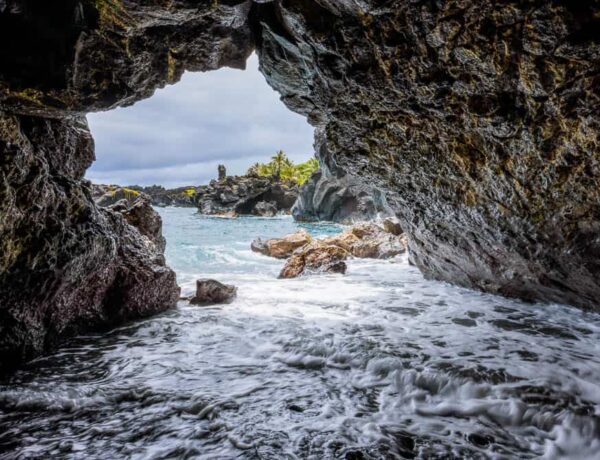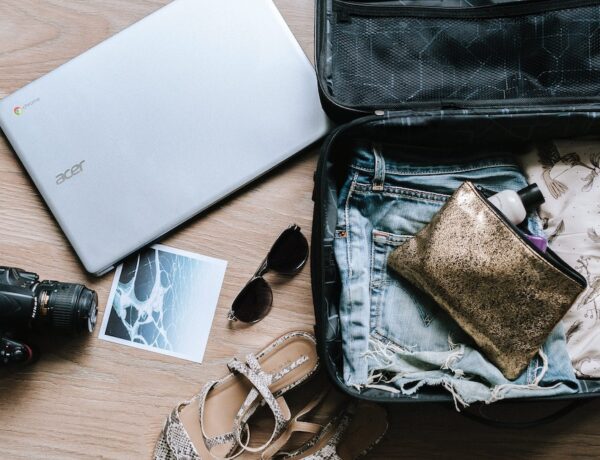Last Updated on January 20, 2025
A road trip along Maui’s Road to Hana — where the romance of cascading waterfalls and a canopy of rainforest foliage meet the untamed beauty of the island’s rugged shoreline — is the gateway to an unforgettable tropical adventure.
But venturing onto the famous (and heavily trafficked) Maui excursion isn’t without potential pitfalls. From inclement weather to limited services in the remote region, proper preparation can mean the difference between a National Lampoon-esque vacation debacle and a dreamy Maui getaway.
This post contains affiliate links. By purchasing through these links, we may receive a small commission at no additional cost to you. Maui Trip Guide is also a participant in the Amazon.com Associates Program. As an Amazon Associate, we earn from qualifying purchases.
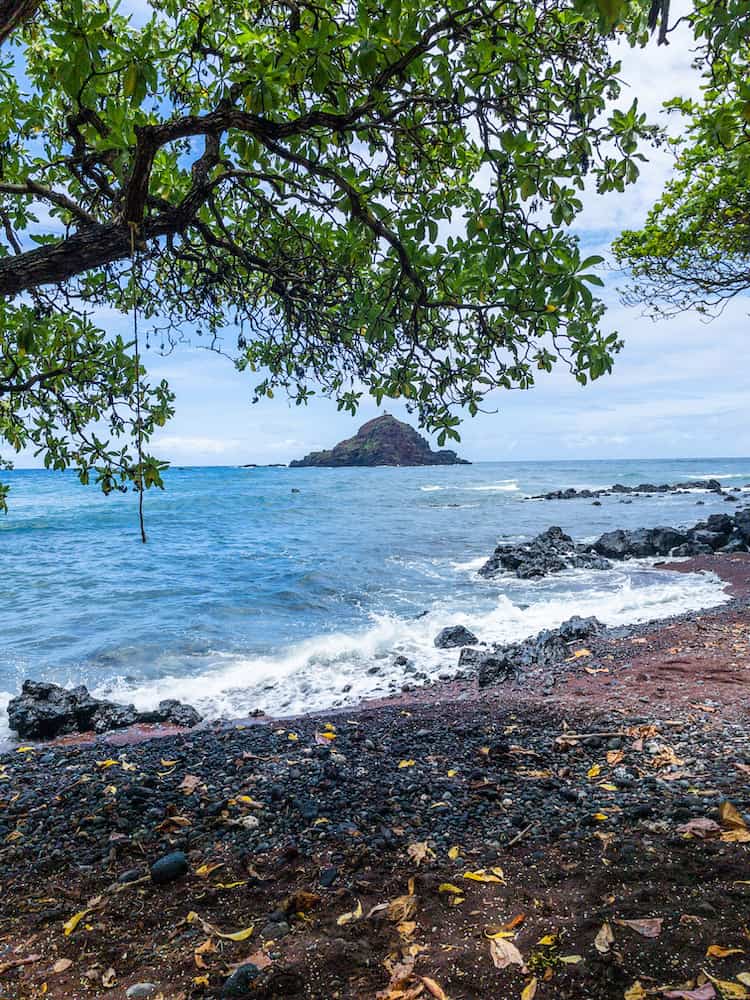
As repeat Road to Hana adventurers, these are our go-to tips for driving and spending the day on the Hana side of Maui. Keep reading to find out what you need to know before embarking on Maui’s Road to Hana.
15 Top tips for driving the Road to Hana
We don’t recommend that you tackle this Maui drive without an idea of what to expect. Here are our recommendations for a smooth trip along the famous Road to Hana.
1. Download an audio GPS driving guide
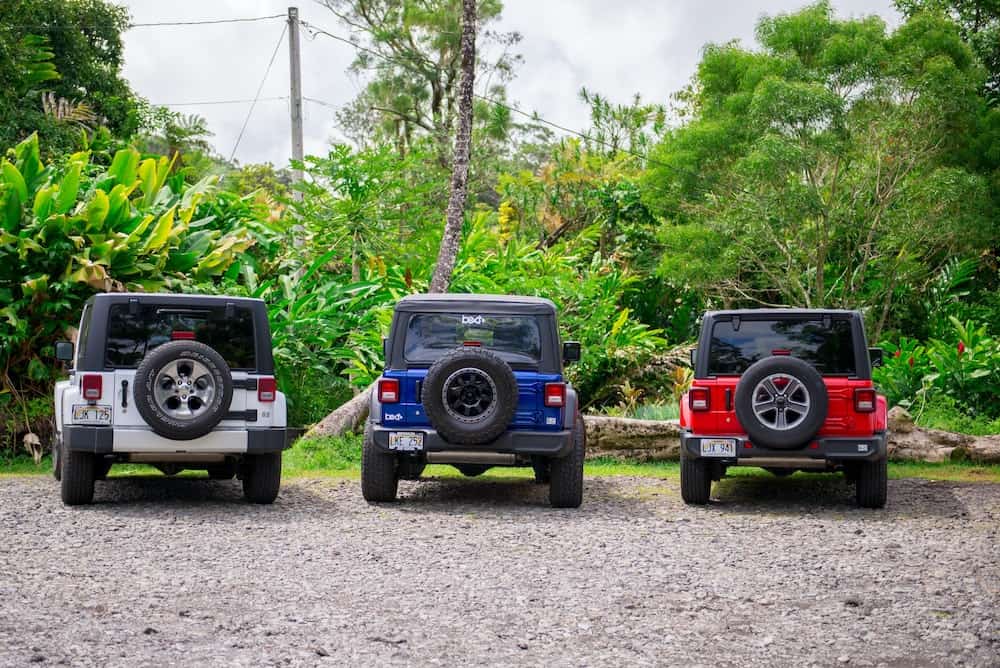
If you think that connecting to Google Maps will be enough to navigate the Road to Hana, think again. First, cell phone service along Hana Highway is spotty at best and non-existent at worst.
While downloading an offline map helps, there’s an even better option — a dedicated GPS driving app for your mobile phone. The two most popular Road to Hana apps are Shaka Guide and GyPSy Guide. We’ve used GyPSy Guide for years, ever since we first started taking trips to Hawaii.
With GyPSy Guide, you get:
- Turn-by-turn instructions to upcoming stops on the Road to Hana as you’re driving, using your GPS coordinates. If you lose cell phone reception, the app still works.
- An explanation of what to expect to see at a stop.
- Recommendations for where to find parking.
- Advice about what stops are worth it, and what you want to skip if you’re short on time.
When we last used the GyPSy app in June 2022, I noticed that the guide had been updated to reflect recent changes at some of the popular sights. For example, the updated tour mentioned the reservation requirement for Waianapanapa State Park, which the state implemented in March of 2021.
2. Plan your must-do stops in advance — but stay flexible
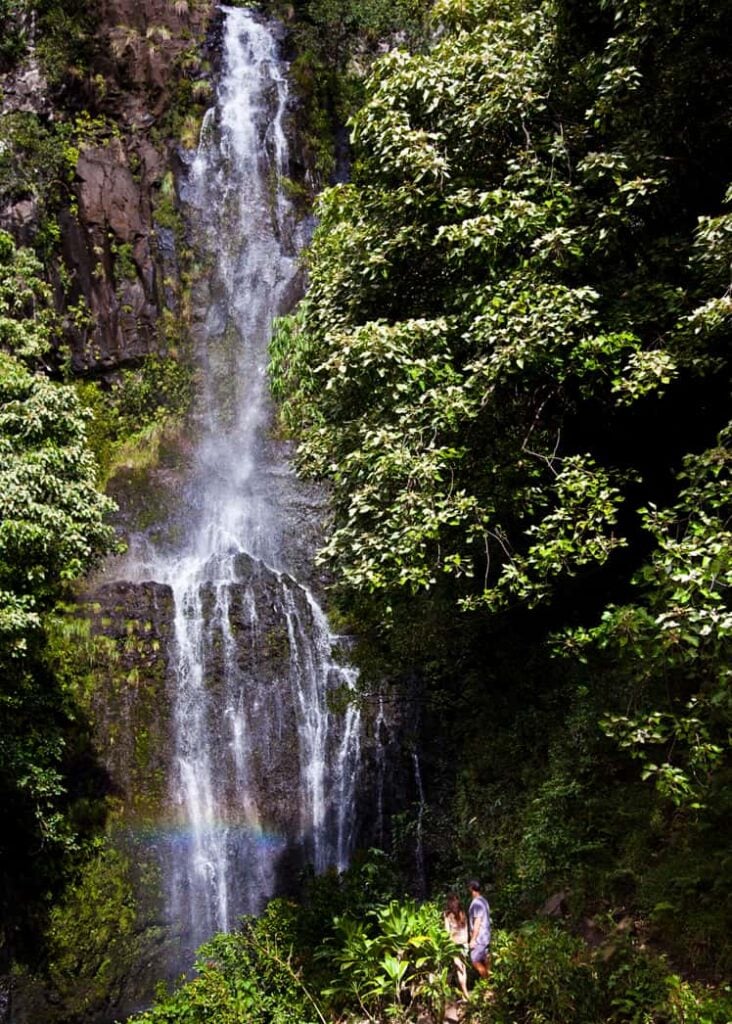
While a digital GPS app will notify you to an upcoming stop as you drive the Road to Hana, it’s still a good idea to narrow down which stops make your must-do list. If you were to make every stop suggested on the app, you wouldn’t make it back to your hotel before dark.
Our tip: if all of your must-do stops are toward the end of the drive, drive past the stops at the beginning and see the sights on the latter part of the road. Depending on time, you can always turn around and see the stops you skipped at the end of the day
Whatever you choose to do, remember to stay flexible with your itinerary. Some of the best travel experiences can happen on a whim, whether you see an interesting food truck or pull off to the side of the road (legally!) to catch a view you hadn’t planned on.
Want to know the can’t-miss stops along the Road to Hana? Read our 18 Best Road to Hana Stops For An Unforgettable Vacation.
3. Print or take a screenshot of your Waianapanapa reservation
You’ll need to make an advance reservation to visit one of the most popular stops along the Road to Hana — Waianapanapa State Park. Known best for its black sand beach and easily accessible lava tube, the park also features coastal trails, a blowhole, and sacred burial sites.
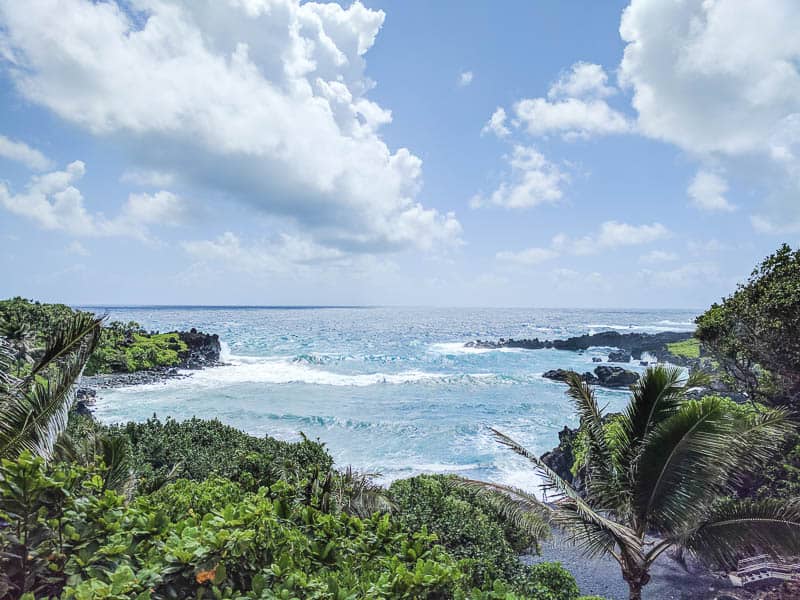
The Waianapanapa State Park doesn’t have reliable cell phone service, so make sure that you either print out a copy of your reservation confirmation or download a copy to your mobile device.
On my last visit in June 2022, I took a screenshot of the confirmation on my mobile device and added it to my favorites album. With the confirmation saved to my phone, I simply showed it to the park staff to gain entry.
4. Get an early start
If your goal is to make it past Hana and back (or venture on the road less traveled and make a complete loop around the island), you’ll need an early start. Not only does heading out early afford you more time to enjoy the sights, but you’ll beat the crowds. Plan to be on the road (from Paia) no later than 7:00 a.m. to make the most of your day on the Road to Hana.
5. Pay attention to opening and closing times
While planning my last Road to Hana trek, I had a craving for Aunty Sandy’s banana bread. We originally scheduled our drive for a Sunday. That is, until I discovered that Aunty Sandy’s is closed on Sundays. So I did what any rational food-driven traveler would do — I rescheduled our drive to Saturday instead.
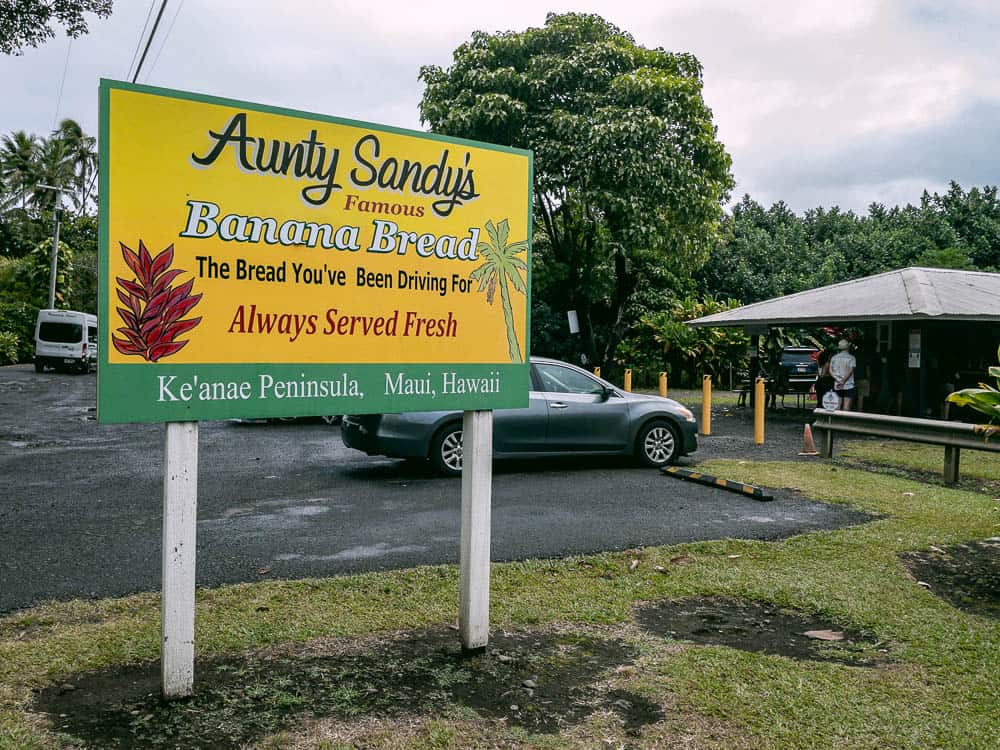
While you can’t avoid sudden and unexpected closures along the Road to Hana (it’s a remote area with sudden weather changes, after all), it’s a good idea to double-check both open and closing times for the places where you plan to stop.
Visit the site’s official website and social media accounts to find out what hours the Road to Hana stop will be open. Don’t be afraid to call or email for the most up-to-date and accurate info.
6. Fuel up the car before you set out
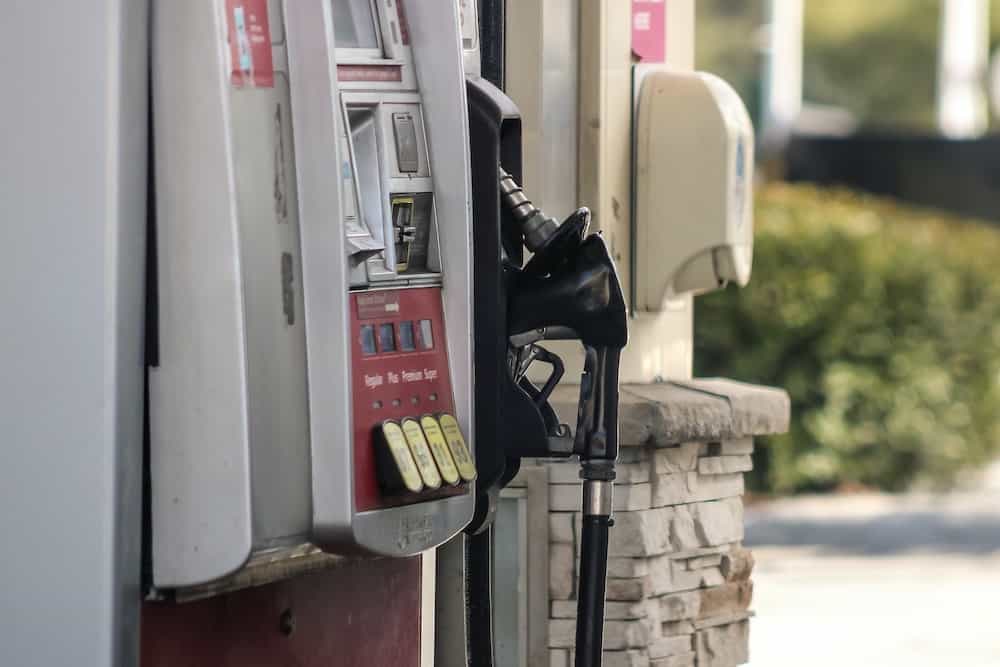
If your car is low on fuel and you think you’ll stop for gas along the way — think again. Driving east on the Hana Highway, your last chance to fill up the gas tank is in the town of Paia — around 45 miles away from the next fuel station in Hana.
Fill up on gas before tackling the Road to Hana, or you could end up stuck on the side of the road.
7. Wear comfortable layers
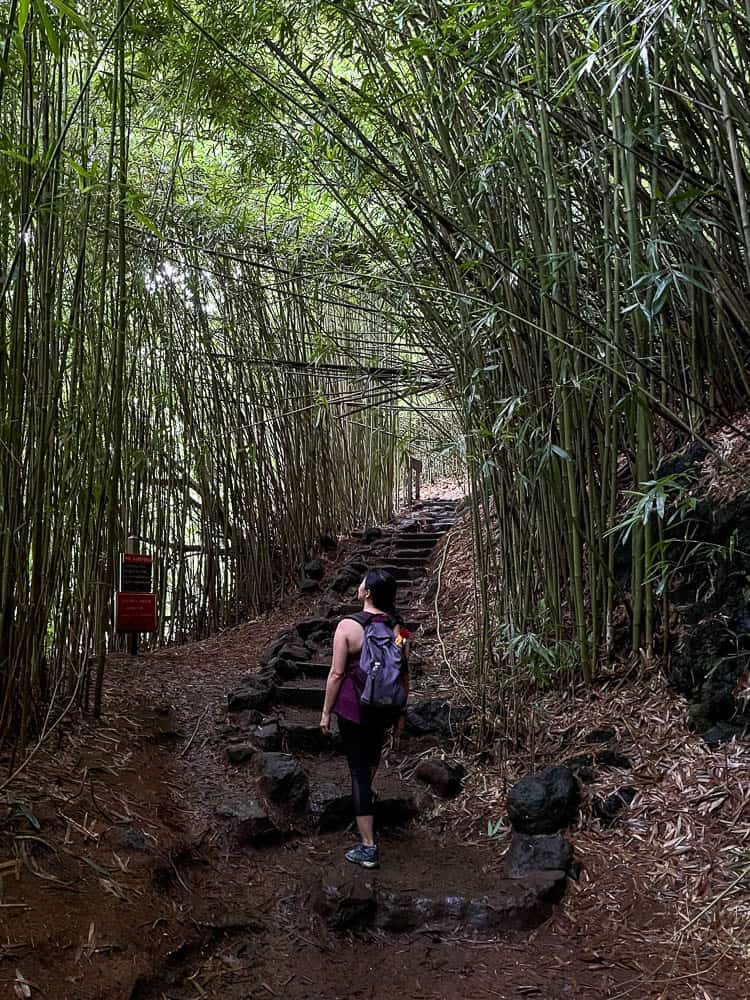
Nix restrictive fashion forward outfits in favor of comfortable layers. Think athleisure wear, not designer fashion. You’ll be spending much of the day on the road and in nature.
And while the tropical weather leans toward hot and humid, it gets windy, wet, and cold, too. Pack a light sweater in your day pack in case the journey turns chilly.
8. Bring an extra pair of shoes/sandals/socks
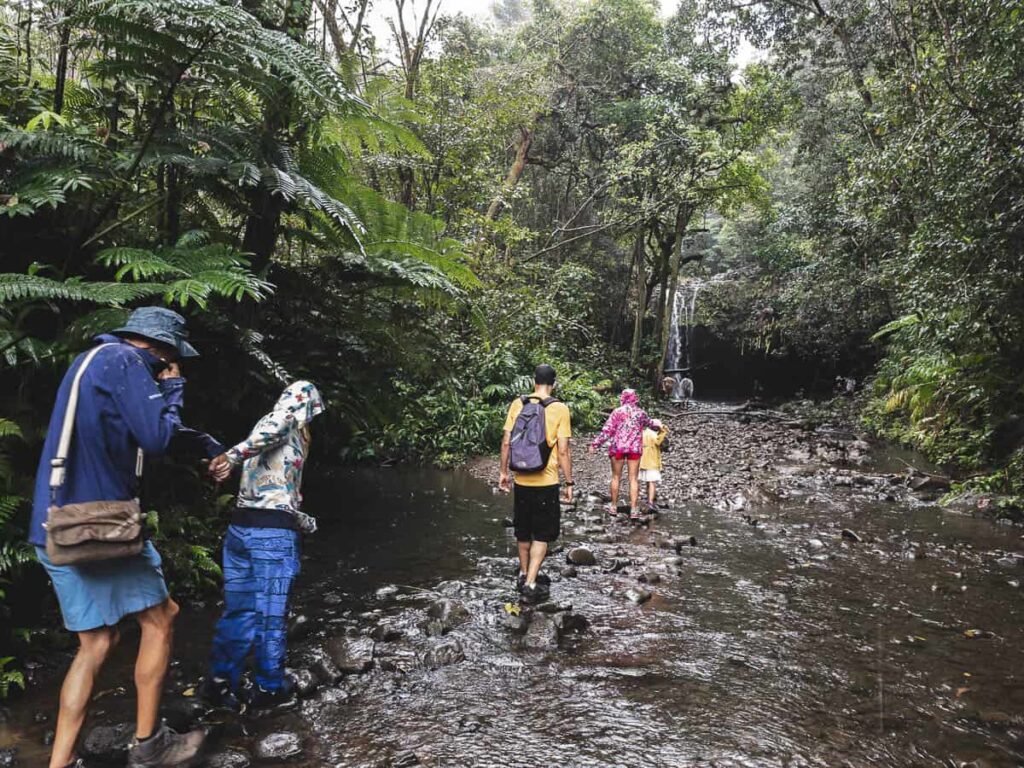
We recommend bringing extra socks and shoes on your drive if you aren’t wearing waterproof shoes. Even if it isn’t raining while you’re journeying toward Hana, the ground can remain wet and muddy for days after a downpour.
If you get lucky and find the Road to Hana trails bone dry, the extra shoes and socks could still come in handy. You’re bound to cross a stream or two while exploring the local trails, which could lead to damp feet.
9. Bring cash
Whether you stop at food trucks or roadside produce stands, it’s a good idea to bring cash with you on your Road to Hana drive. While some vendors — such as the famous Aunty Sandy’s banana bread stop — accept credit and debit cards, many businesses on the east side of Maui accept payment in cash only. Bonus points if you carry small bills if your purchase adds up to only a few dollars.
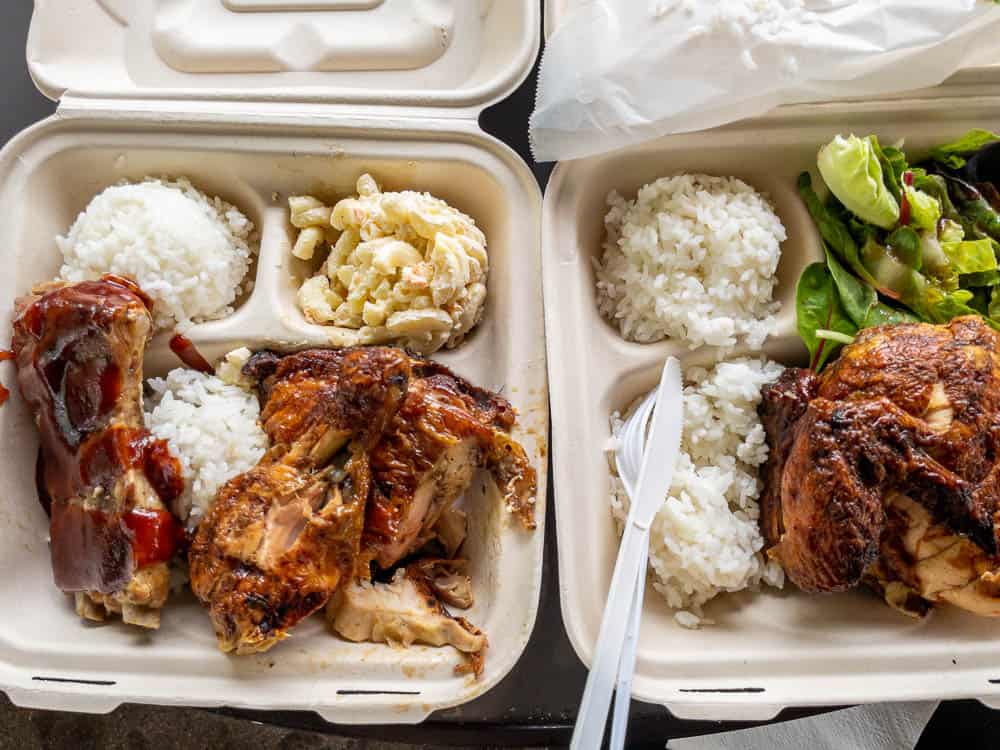
During our last trip, we stopped at Coconut Glen’s (coconut ice cream truck) and the huli huli chicken spot at Koki Beach. Both were cash only businesses.
How much cash? We recommend carrying around $40 per person. In 2022, we spent around $25 per person for a huli huli chicken lunch and $8 for ice cream at Coconut Glen’s. That leaves a few extra dollars for other roadside stops.
10. Prepare for rain — even if you don’t see clouds
The Hana side of the island has a microclimate that’s more rainforest than rain shadow. When you leave sunny West Maui or South Maui and venture toward Hana, don’t assume that the weather will hold up.
The area is known for sudden downpours and erratic weather systems. While you could tote an umbrella on your trip, we much prefer a lightweight poncho and clothing that dries easily. Ditch heavy jean fabrics that take forever to dry. We recommend tech fabrics often used for workout apparel. Some of our favorite brands include Smartwool, Lululemon, and Under Armour.
11. Use the lane turnouts
It’s easy to forget that some Maui residents commute Hana Highway every day, and that the Road to Hana is also their road home. Unlike visitors who’ve never experienced the twisty highway, these Maui locals know this stretch of asphalt like the back of their hand — and drive at a fast clip.
When you’re driving the Road to Hana, keep an eye for fast-moving traffic behind you. Pull over into one of the many turnouts along Hana Highway to let faster traffic pass. You’ll avoid tailgaters while trying to navigate the unfamiliar drive — and the passing driver may just throw a shaka (a friendly “hang loose” hand gesture) your way in appreciation.
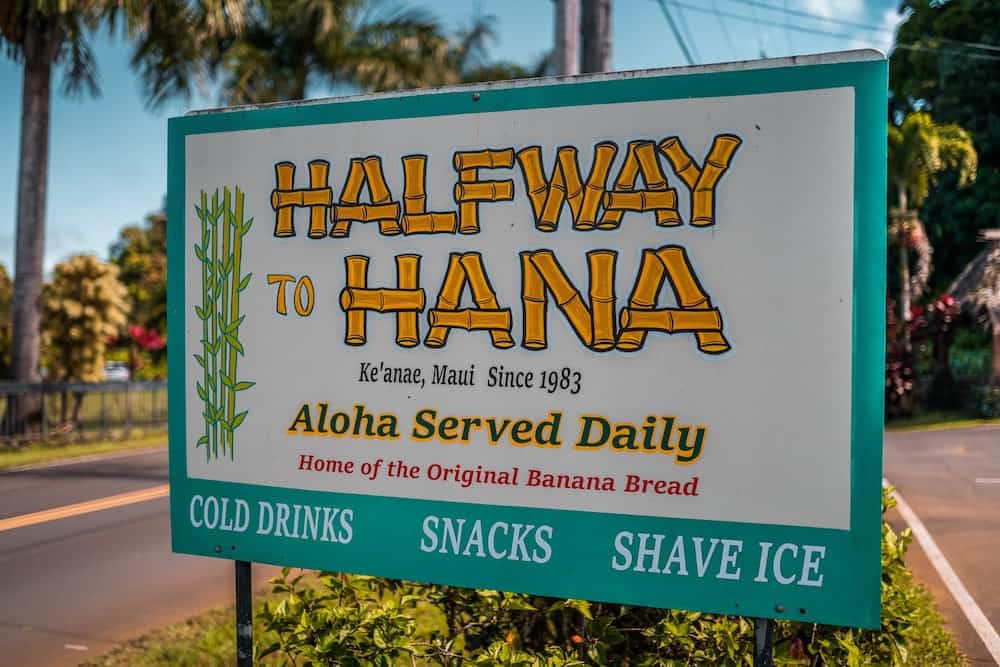
12. Heed no trespassing signs — kapu means “forbidden”)
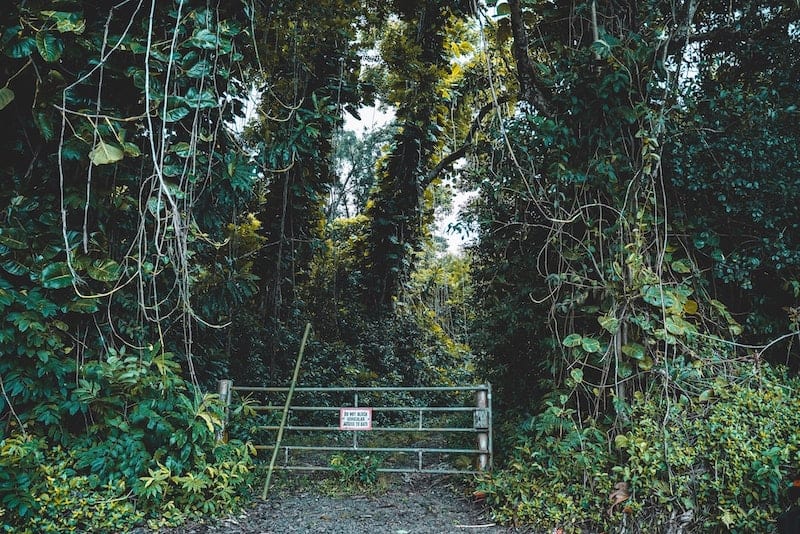
No one appreciates strangers traipsing through their home. Maui residents are no different. Unfortunately, some guide books and travel influencers promote trespassing on private land to reach sights that aren’t open to the public. In many cases, these areas don No Trespassing signs because of dangerous conditions, such as crumbling cliffsides and risk of flash flooding. Helicopter rescues are a regular occurrence along the Road to Hana.
We’ve seen many tourists completely disregarding No Trespassing signs and entering private property. Doing so not only draws ire from locals, but it’s illegal — and potentially dangerous. Instead, stick to the publicly accessible stops. There are plenty of beautiful places to visit along the Road to Hana without stomping through someone’s backyard.
13. Stay overnight if you can

To truly experience the Hana side of Maui, you need more than a day. If you can swing a night or two in the area, you’ll experience the stops along Hana Highway in a whole new way.
Enjoy a deserted black sand beach at Waianapanapa State Park in the early morning, before the tour buses and crowds descend. Enjoy breakfast amongst the locals in Hana. Or behold the ancient banyan tree along Pipiwai Trail without a throng of Instagrammers elbowing for the perfect angle.
14. Driving “the back side” of the Road to Hana can be risky
The typical route for the Road to Hana is to travel east on Hana Highway from Paia, driving along Maui’s shoreline from the north in a counterclockwise direction. Most travelers turn around near Hana or Kipahulu and return on the same road.
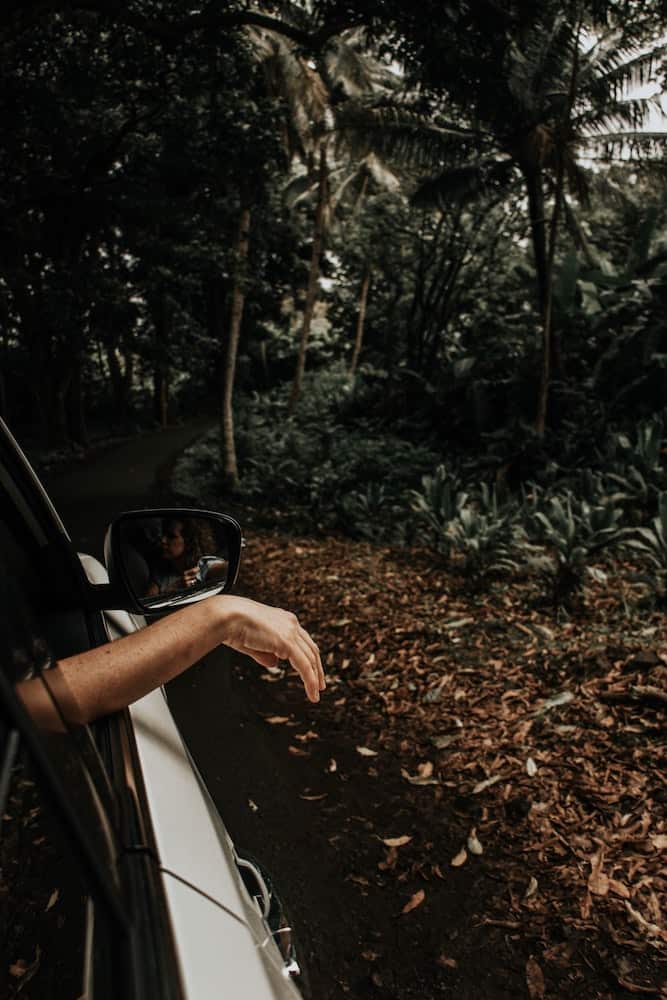
However, Hana Highway continues around Maui, circling the east and south side of the island until the road becomes Piilani Highway. Then it turns north through Upcountry, eventually leading full circle to the north side of the island.
The section where Hana Highway becomes Piilani Highway (heading eastbound) turns into a country road — dirt instead of smooth pavement, suspension-stressing potholes, and narrow vehicle passage.
The road becomes even less inviting after heavy rain, which can cause washouts and dangerous driving conditions.
Even if your rental car agreement doesn’t explicitly prohibit driving this rugged section of road (I’d also keep an eye out for a common restriction about unpaved roads), take caution. If your car breaks down on this stretch, you’re in for a nightmarish time.
Not only will you be out of luck with cell phone service, but because of the remote location, it could take hours before a tow truck gets to you.
If you decide to drive the back road, make sure your vehicle has been maintained, carry a spare tire, and have emergency roadside equipment with you in the event of a breakdown.
15. Drive back before it gets dark
There aren’t streetlights along the Road to Hana, so make sure you head back to your hotel well before sunset. Otherwise, you may get stuck driving the twists and turns with only your headlights to guide you. If just the thought of driving the winding road gives you jitters, you’ll need nerves of steel to make the return journey in the pitch black.
What to wear on the Road to Hana
Comfort is key when you’re road tripping. And in a tropical rainforest, you’ll need to factor in both humid heat and wet, cool weather. Here’s an example of what I’ve worn in the past:
- Lululemon capri pants – These pants are made of moisture wicking material that dry quickly if it rains, or if I’m sweating through a tough hike.
- Smartwool t-shirt – Made of lightweight Merino wool, this non-itchy top keeps me cool and dry.
- OluKai sandals – These quick-dry sandals have a molded footbed for comfort while on easy hiking trails and day excursions.
- Columbia hiking shoes – I prefer hiking in shoes, not sandals. I have a pair of waterproof Columbia hiking shoes similar to this pair.
- Lightweight sweater – I like this long sleeve zip-up hoodie that doubles as sun protection with a UPF rating of 50+.
If your plan is to swim at a waterfall or wade into the ocean during your drive, don’t forget to pack a swimsuit, or wear a swimsuit under your clothes.
What to bring on your Road to Hana drive
The nice thing about a road trip is that you don’t have to be thrifty about packing supplies for the day’s journey. These are my favorite things to pack when driving the Road to Hana.




- Day pack – Something small and lightweight will do. I carry valuables that I don’t want to leave in the car while I’m hiking, along with bug repellent, a light sweater, water, and snacks.
- Cell phone with GPS audio guide – We use the GyPSy guide. Scroll up to our #1 tip and see why!
- Car charger adapter and phone charging cable – Not every car has a USB charger built in, so it’s nice to have a car charging adapter on hand.
- Mobile phone car mount – No more fumbling for your phone. Keep it safely mounted on your dashboard with a mobile phone mount like this one.
- Snacks – A road trip wouldn’t be complete without snacks. There are plenty of places to stop along the way, but you can save money by carrying your own.
- Soft cooler with ice – I’m a fan of cold water and fresh fruit, so I like to bring a collapsible cooler with me. These also work great for beach days.
- Bug repellent – Biting bugs always find me, but I’m not a fan of chemical DEET. I like using essential oil-based repellents such as Wondercide’s insect repellent (I use their flea and tick repellent on my dogs at home, too!).
- Spare shoes and socks (or hiking sandals) – I favor Columbia brand hiking shoes and lightweight Smartwool hiking socks.
- Refillable water bottle – I carry this stainless steel water bottle everywhere I go, whether I’m hiking on vacation or sitting at my home office. My water stays cold all day.
- Sun hat – I wear this exact roll-up sun hat on the beach, trails, and even at outdoor restaurants. It has a UPF 50+ sun protection and rolls up for easy packing.
- Sunglasses – Anywhere on Maui, sunglasses are essential.
- Swimsuit – In case you take a dip into the ocean or wade into a waterfall pool.
- Beach towels – Pack a beach towel from your resort or condo rental. I’m also a big fan of Turkish beach towels like this one from Sand Cloud. They’re lightweight, less bulky, and don’t attract sand like regular towels.
- Poncho – You don’t need anything fancy, just something to keep you dry during a sudden downpour. We got caught during one hike without a poncho, and we were soaked by the time we got back to our car.
- Hooded sweater or jacket – Weather along the Road to Hana ranges anywhere from warm and humid to cool and breezy. As someone who gets chilly easily, I always carry a spare sweater or long sleeve top. It’s also a helpful barrier against bugs.
Don’t leave any bags or valuables in view when you leave your vehicle. While we personally haven’t experienced vehicle theft while touring Maui, the island isn’t impervious to crime. Whenever possible, leave items in the trunk to deter would-be thieves.
What time to start the Road to Hana
We highly recommend getting an early start when driving the Road to Hana. If you start your drive in the late morning, you’re more likely to get stuck in traffic and encounter a throng of tourists at every stop. Leave the Paia area by 7:00 a.m. to get a head start.
Where to stay along the Road to Hana
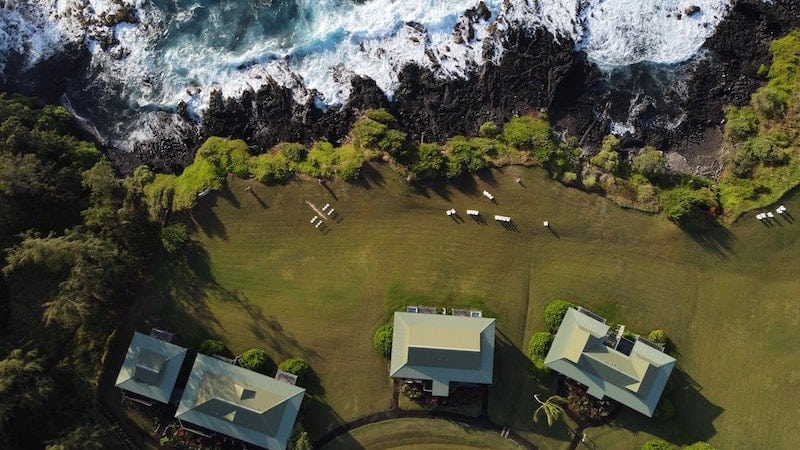
By staying overnight near Hana, you can avoid rushing past magical experiences and immerse yourself in the east side of Maui. These are a few of our favorite options for overnight stays in or around Hana:
Resort stay
- Hana-Maui Resort by Hyatt – Travelers seeking a luxury experience will appreciate this Hana oasis. The resort offers spa services, onsite dining, and oceanfront views.
Vacation rental
- Guest Houses at Malanai, Hana – This private vacation retreat features two oceanview bungalows on a two-acre property.
- Hamoa Bay Bungalow – Reserve the Asian-inspired Hamoa Bay House, where bamboo trees and an antique gate guard the secluded sanctuary. Or select the bungalow, a treetop studio perfect for two people.
Campground
- Kipahulu Campground – Tent camp near the Pipiwai Trail. You’ll get a head start hiking to the banyan tree, bamboo forest, and waterfall before the crowds descend.
- Waianapanapa State Park cabin or campground – Wake up to the sound of the ocean and explore the park at sunrise. Reserve a cabin, tent campground, or camper vehicle site on the state park’s website.
Road to Hana FAQs
Is it hard to drive the Road to Hana?
That depends on your definition of hard. I grew up driving in California, where cars are fast and drivers are more assertive than other parts of the U.S. I also have experience driving on twisty roads. For me, the Road to Hana isn’t a particularly hard road to traverse, but drivers do need to take greater care than if driving a straight stretch of highway.
If it’s your first time driving on the Road to Hana, the twists and turns are obviously unfamiliar to you. Second, you contend with other cars and drivers unfamiliar with the highway — a recipe for potential fender benders. Third, the locals tend to drive at speeds that seem aggressive to Road to Hana newbies — but it only seems that way because they’re familiar with the road.
My advice: Drive at a reasonably slow speed, pull into turnouts and let cars pass to avoid blocking traffic, don’t stop on bridges, and yield to others (or wave to other drivers who yield to you) when crossing a one-lane bridge.
How much time do you need for the Road to Hana?
If you’re planning to do the full route — either a complete loop around Maui’s back side or past Hana and back — expect to spend 8 to 12 hours on your driving excursion. Timing can vary depending on the traffic, how many stops you make, and how long you stop at each place along the highway.
Where should I stop along the Road to Hana?
For a list of our top spots along the Road to Hana, check our list of 18 must-see Road to Hana sights.
